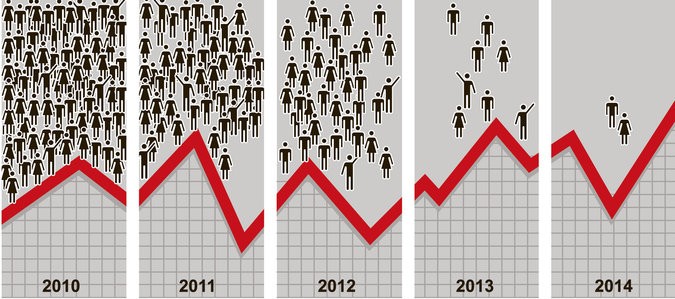The top stockmarket strategy of the past 50 years
Post on: 15 Май, 2015 No Comment

PatrickO’Shaughnessy
STAMFORD, Conn. (MarketWatch) — Mr. Market seems to have forgotten his meds.
Market returns have become so volatile that daily returns of 3%-5% — up or down — are hardly surprising. Volatility is a cruel beast, because it leads investors to make emotionally based decisions that center on the near term future and ignore longer-term opportunities. Moreover, many investors are staying out of the stock market entirely or selling their equity stakes.
2011 REVIEW & OUTLOOK
says Liz Ann Sonders, Charles Schwabs chief strategist.
Europe’s frustrating gradual approach to the debt crisis is unlikely to change in the year ahead.
Sadly, investors tend to have terrible timing. One study by John Bogle, the founder of mutual-fund firm Vanguard Group, found that for the 20 years ending 2003, the S&P 500 Index SPX, +1.26% returned 13% per year, while the average mutual fund returned 10.3% and the average investor achieved just a 7.9% annualized return. And that was before all of the emotional selling caused by the crash of 2008!
Another tragic example of mistimed asset allocation comes from the American Association of Individual Investors. AAII has surveyed its members since 1988, asking them what their current allocation is to stocks, bonds, and cash. The highest weight to cash — and lowest weight to equities — in the history of the survey was in March 2009, right at the bottom of the worst bear market since the 1930s. When was the highest weight to equities? January 2000, near the absolute top of the stock market’s 20 year bull run.
Clearly, panic and greed lead people to do the wrong thing at the wrong time — and to do so consistently.
Trending Value: Exceptional long-term performance
We believe the answer to this problem is re-framing each individual’s investing goals, time horizons, and strategies. Find the best, time-tested investment strategies and stick to them for long periods and through inevitable stretches of underperformance. With discipline, beating the market and earning strong returns over time is achievable.
In the fourth edition of “What Works on Wall Street,” we have identified what we believe to be the most successful investment strategies over very long periods. Many strategies in this book were tested back to 1927, which allowed us to evaluate them during recessions, runaway bull markets, and the Great Depression.
With this new research, we have refined the way that we measure characteristics in a way that boosts returns. We found that an updated combination of value and momentum strategies — a tactic we call “Trending Value” — is the best performing strategy since 1963.
Its annualized return of 20.58% through Sept. 30 crushes the All Stocks benchmark (an equally weighted benchmark of stocks with an inflation adjusted market cap great than $200 million), which has a return of 10.71%. Plus, the Trending Value approach achieves its return with a volatility of 17.69%, lower than the benchmark’s 18.26%.
2012 market outlook: Meeting in the middle
The last few years have been highlighted with record swings in market returns and widely oscillating economic data, but investment strategist Mark Lamkin expects 2012 will be less about extremes and more about the middle. Images: Traders
The strategy makes use of one of the main innovations from the book: the use of a composite value factor. In the original publication, we identified price-to-sales as the most effective value factor. In this latest edition of the book, we have learned that a composite that combines several different value factors delivers stronger returns and more consistency than any individual factor.
By spreading our bets and ensuring that a stock is cheap in a variety of ways, we believe we can identify better stocks. One version of the composite value factor combines the following measures of value:
• Price-to-Sales
• Price-to-Earnings
• Price-to-Book
• Price-to-Cash Flow
• EBITDA/Enterprise Value
• Shareholder yield (dividend yield + rate of share repurchases)
Each stock in the universe gets a score of 1 to 100 for each of these factors. The final value score is an average of these scores. The Trending Value portfolio narrows the investable universe to the 10% of stocks with the best score based on the value composite, and then selects a concentrated portfolio of 25 stocks based on trailing six-month momentum.
This simple combination builds a portfolio of extremely cheap stocks that are on the mend. The combination of value and momentum works better than either of these factors on its own.
Examples of stocks currently passing this strategy are Advance America Cash Advance Centers Inc. AE.A, -50.00% , Tesoro Corp. TSO, -2.78% , and Smithfield Foods Inc. SFD, +0.56%
Of course, we certainly expect there to be stocks in our strategies that underperform, and these three stocks may not perform well in the coming year. But we also know that a diversified portfolio of stocks with the characteristics these stocks currently posses has fared extremely well over time. By focusing on the long term, and taking advantage of market volatility rather than being scared off by it, investors can beat the market in the long term and achieve their investing goals.
James O’Shaughnessy is Chairman and CEO of O’Shaughnessy Asset Management, and author of “What Works on Wall Street.” Patrick O’Shaughnessy is a Research Analyst at O’Shaughnessy Asset Management.














